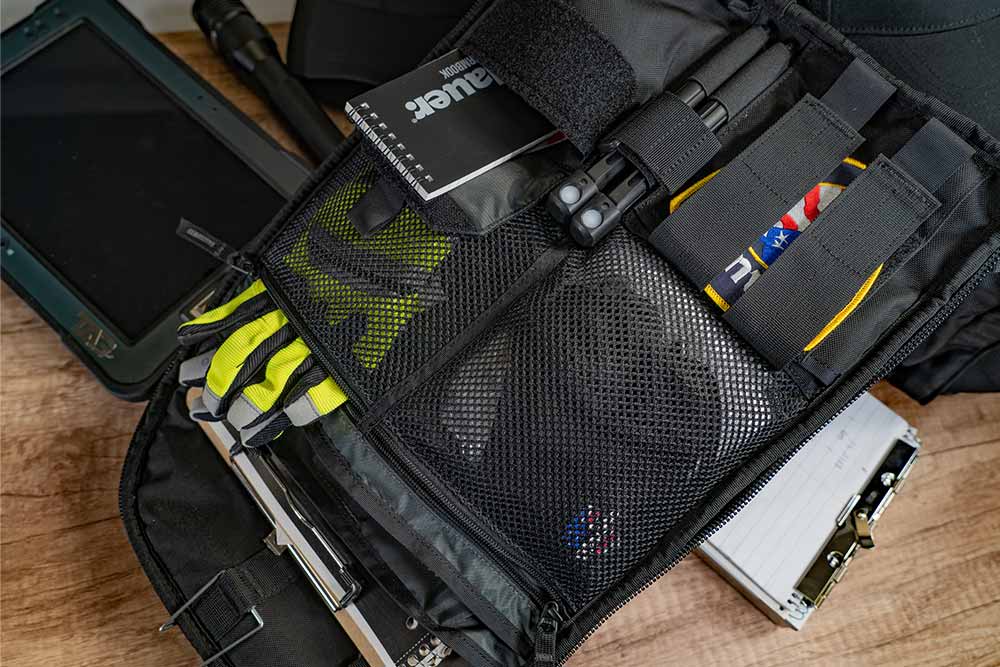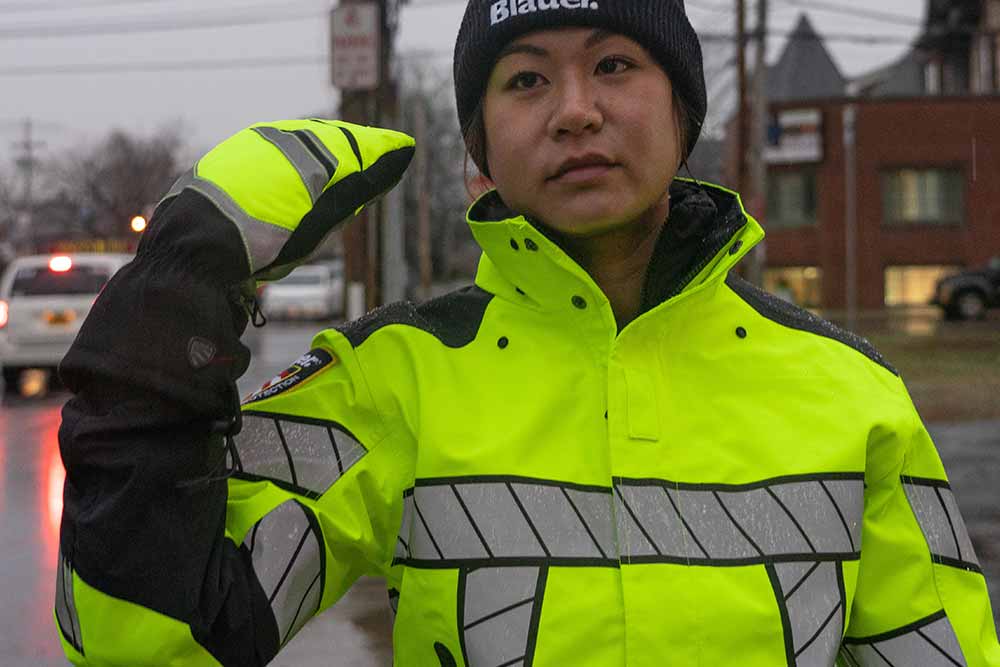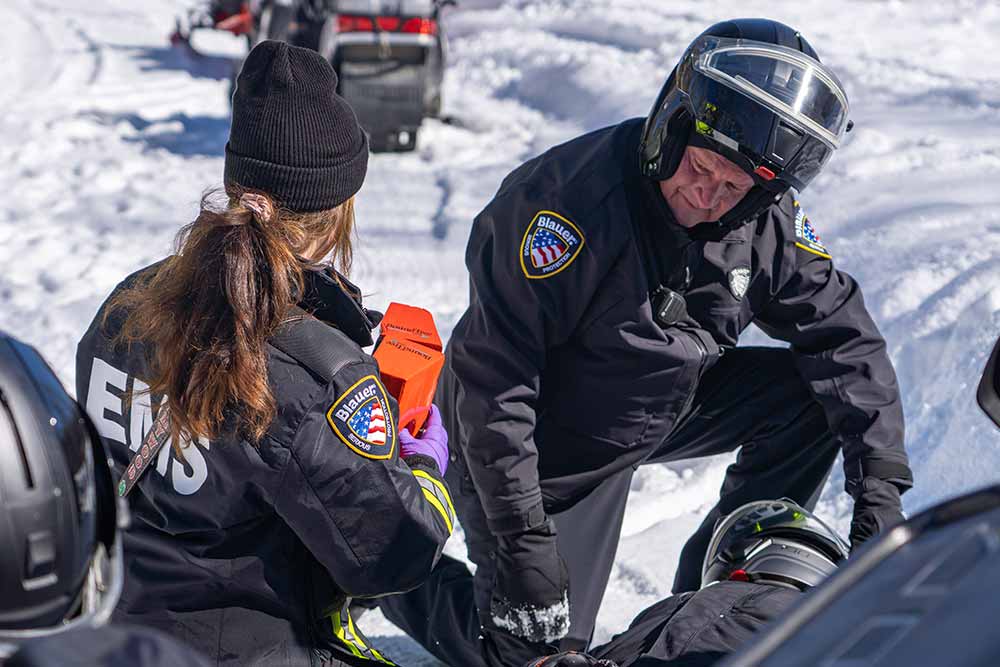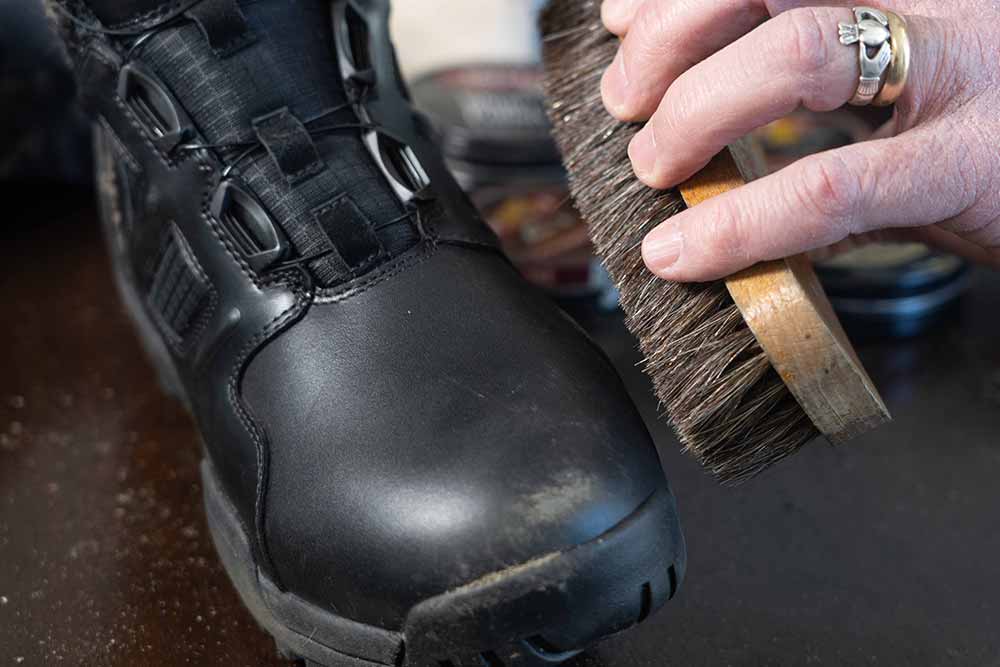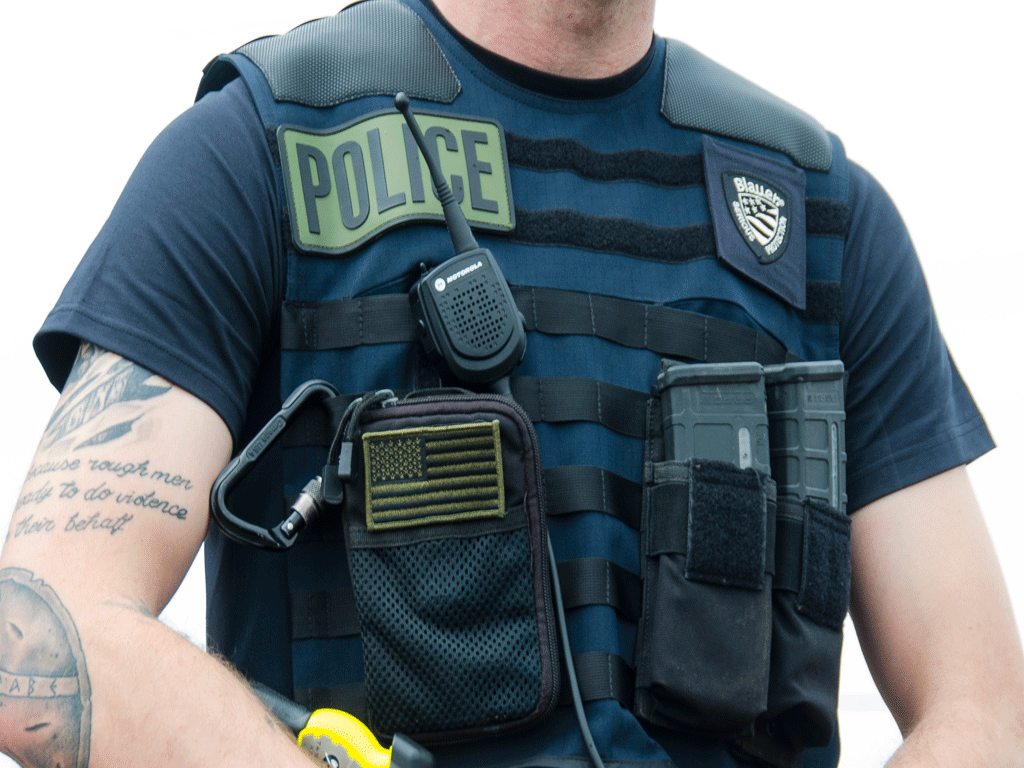
The bane of existence for the lower back, hips, knees, and ankles of every cop in modern history has been the duty belt. For most of us, the ever-increasing amount of gear that we have to strap onto it has led to a point where it sometimes feels like we’re carrying around a kettlebell for 8-16 hours at a time, except it’s teetering on our hips.
Some (probably most of us) may not realize just how heavy it is, however, because we just sort of accept that it’s what we have to wear. As such, I’d invite you to try a little experiment: the next time you put yours on, try holding it up with one arm for a minute or so first, and you’ll realize pretty quickly just how much weight is being loaded onto your lower body every day.
With that much pressing down as we walk around, it’s not surprising that the vast majority of injuries which officers sustain happen from the lower back on down . One study showed that roughly 86% of officers suffer, for example, from lower back pain – caused in the estimation of 61% of those who felt the pain by their duty belt and the seat in the police car. Even the act of sitting in a car and being jounced around while seated contributes, with a 4-hour stint of seated driving contributing to a more than 200% chance of experiencing lower back pain according to another study.
Not a great combination to begin with, and when we add running and walking around while carrying that extra weight, it’s small wonder that immediately after lower back pain we find the common hip, knee, and ankle injuries that frequently sideline officers. These injuries affect not only our lives on the job, but what we do when we’re not at work, and what we’ll be able to do when we (hopefully) retire someday. So what can you do to help prevent those injuries from happening, given that we do, in fact, have to carry all that gear every day?
We Like To Move It Move It
One solution which more and more agencies are moving to, including Alaska State Troopers (hey, they have their own show, so it’s the most visible example), is getting the weight of the gear off of the hips, which aren’t really designed to bear extra weight directly on them, and moving it to the torso.
Tactical vest design has improved a lot over the last few years, as the understanding of how officers carry gear, and what they need to have handy, has become clearer to those who study it in order to engineer the equipment to carry it in. With the advent of MOLLE gear, which offers a universal attachment system to place equipment onto a vest or anything else with MOLLE webbing on it, that process was made a bit easier, since it allows for maximum flexibility in where something is carried on the body based upon individual officer preference.
A MOLLE vest therefore becomes the most-utilized system for officers, even though external body armor carriers are available without it, especially in circumstances where officers on specialty assignment (detectives, other plainclothes) might need to don their armor and gear quickly to respond to an incident.
It’s also pretty popular when used as a threat-response setup, where an officer might need more or different equipment (plus up-armoring) to respond to an active-shooter threat, for example. By having the gear preplaced on the vest, and knowing the layout, it’s easy to throw it on quickly and engage the threat. Some examples of that include placing AR mag pouches onto the tactical vests, gas masks, or other MOLLE gear like tourniquet holders or self-rescue kits.
Why Does That Help Me?
Generally speaking, moving weight off of your hips and distributing it so that your shoulders help carry the load is a well-established practice, and the entire reason why backpacks exist. Can you imagine carrying around a backpack-sized load of camping equipment in a fanny pack? That’s essentially what you’re doing all day.
Given that, the idea of carrying some of your police gear in a tactical vest carrier probably seems to make a lot of sense – because your upper body and shoulders were “designed” to carry weight directly. Of course, proper stretching and exercise can also help to alleviate some of the pain and reduce the chance for injury, and should be incorporated into your daily routine wherever possible, but the idea of moving the weight of some of your gear around (and maybe even having the choice of where to put it to help balance the load on your body) is worth serious consideration.
Every step you take with a duty belt on increases the chance of injury, which might mean fewer steps you’re physically able to take in your life after work. By taking the proper precautions, and making a decision about how and where to carry the gear you need every day, you’re helping to protect not only your community, but your own welfare and health as well. In the end, that’s what you’ll be left with, and so it should be the first thing you think about as you protect and serve in the field.
____
Greg Bogosian is certified as a Reserve/Intermittent Police Officer by the Commonwealth of Massachusetts, and spent twelve years working as an EMT-Basic, including four years as a field EMT and dispatcher for the City of Boston EMS. He was additionally a member of a Federal medical disaster relief team for ten years, with experience responding to the aftermath of Hurricane Katrina, and the pre-deployment of resources for Hurricane Ike. Greg currently has a passion for educating public safety professionals about matters which impact their lives every day, and welcomes feedback and suggestions in the spirit of ensuring that best practices make it out there for all to benefit from.


